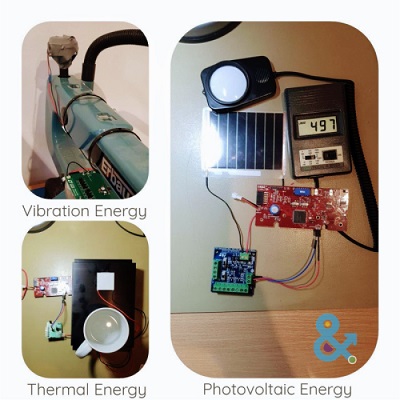ARTICLE
Does environmental energy harvesting make any sense?
Energy harvesting (EH) refers to the process of harnessing green energy from the environment to electricity. In other words, EH modules scavenge small amounts of otherwise wasted ambient energy from the environment (often in the form of heat, vibration, light, etc), and convert it to useful energy in the form of electrical power. However, is this enough power to run remote IoT systems? Here at AND Technology Research, we are working on energy-efficient IoT systems with hybrid energy harvesting features to tackle this issue.

IoT monitoring systems can be used in a wide range of communication and sensing applications to collect information from across the globe. They also have a wide range of applications such as transportation systems, wearable devices, item trackers and environmental monitoring. One of the major challenges for an IoT device is power consumption, as many applications require installation in remote places. Consequently, it is very difficult to keep IoT devices fully operable without interruption due to design constraints on power usage. Batteries are by far the most useable energy source for IoT nodes due to their low price and wide availability, yet their inability to support unattended use over long time periods has left designers searching for newer, more advanced solutions in power management.
Harvesting energy from the environment reduces running and maintenance costs, and as long as the harvesting subsystem remains active, the product can operate for many years without the need for battery changes. This means a lifetime cost of ownership that is not only environmentally friendly but capable of independent operation the eliminates the need for regular power supply maintenance – your IoT product is powered for life!
Energy harvesters provide a small amount of power for low-energy electronics with a broad spectrum of applications. For example, it is possible to recycle the energy created by the vibrations created by a moving or braking train and use it to power the lights inside of the vehicle. In another application, we could convert the energy created from a sheep’s movement, or even the heat from the sheep’s body, to power a monitoring device that assesses the condition of the animal or tracks it across a landscape.







